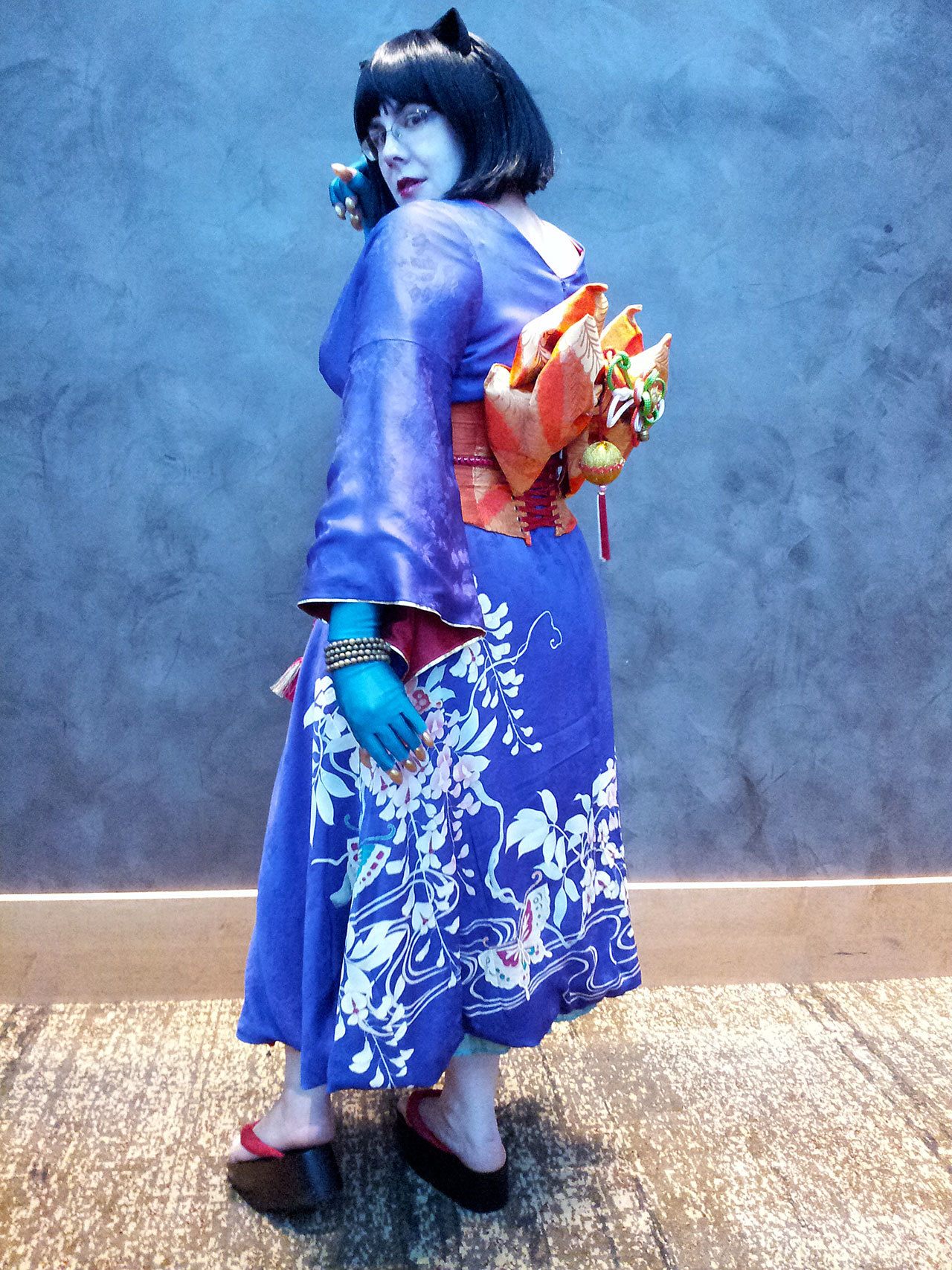Heather Jean Uhl
Heather Jean Uhl, 34, is a faculty librarian at Everett Community College and adviser to the Japanese Club, which provides cultural activities for the campus and the community.
There is a Japanese spring-themed festival this Friday — the Haru Hoedown — with music, stories, food and vendors, at 6 p.m. at EvCC Jackson Center Auditorium. The big annual Japanese Anime & Manga Arts Festival is May 19 and 20 at the college.
It’s more than anime/manga/video games, what some people denigrate as just “weird kids stuff.”
It’s also culture, dress and food.
Uhl, who isn’t Japanese, teaches her students how to make traditional sweets. She collects and studies kimono, offering demonstrations on dressing etiquette. As a textile artist, she works with the idea of Meijipunk, a hybrid fashion aesthetic steeped in history and multiculturalism aligned with the international Steampunk movement. She gives lectures on culture portrayed in anime/manga at Sakura-Con, where she is known by her convention persona “Lady Librarian.”
She lives in a 100-plus-year-old house in north Everett with her husband, Garrick.
How did you get interested in Japan?
I was born in Los Angeles and lived in an area called Culver City. There’s a big Japanese American population there. Growing up I was very fortunate that many of my friends were issei and nisei (first and second generation Japanese Americans). I took off my shoes and sat on the floor when I visited their houses. We watched anime and flipped through manga. I went with them to shop at the Yaohan and Mitsuya (Japanese grocery stores). I joined in summer festivals at the local Buddhist temples. My whole family got involved.
Why are American people so fascinated by Japan?
What about America fascinates Japanese people? We who live on the Pacific rim share a story regardless of the vast ocean that stretches between us. Historically, and presently, East Asian immigrants play a significant role in the formation of West Coast cities and cultures. Seattle, Portland, San Francisco, Los Angeles and the many small towns scattered in between would not be what they are today without their legacy of intercultural exchange. The same can be said for Tokyo, Shanghai, Seoul and many others that have post colonial histories. This legacy survives to this day, in spite of the violence and bigotry (Chinese Exclusion Act, World War II, Japanese American Internment, the Korean War, the Vietnam War, etc.).
This legacy is most visible in visual culture (animation, comics, video games, media) on both sides of the Pacific. The Japanese video game Legend of Zelda features elves and faeries straight out of Western folklore. Pokémon is a portmanteau of “Pocket Monster,” and the monster element comes directly from yokai, supernatural creatures featured in Japanese folklore.
What is anime and manga?
Anime is Japanese animation, which has direct ties to American animation of the early 20th century (think Disney) as well as China and Korea. Manga is most commonly translated as Japanese comics; however, the term was coined in the 18th century to describe humorous or whimsical illustrations being produced by Japanese print makers. The famous artist Hokusai Katsushika, who we know thanks to his work “The Great Wave off Kanagawa,” produced an assortment of drawings and sketches collected into his renounced Hokusai Manga.
What are some misconceptions about this “weird kids stuff”?
I had a visitor to Japanese Club ask, and not entirely in jest, “Do you do anything of substance here or do you just sit around and watch cartoons?”
Despite living in the Age of Marvel, there is a decades old stigma associated with American comics and cartoons. There are those who consider them junk and a waste of time. And yet, I have seen students so motivated by their interest in manga that they’ve taught themselves Japanese just so they can translate and read more of their favorite story. The best thing we can do for anyone (and especially the young) who shows interest in something new or different is to encourage them to learn more and to enthusiastically join them in doing so.
If you could have a drink with anyone, who would it be and why?
Quite selfishly, despite many historic figures I would love to meet, I would love one last cup of tea with my nana. She passed several years ago, and I wouldn’t be who I am today without her.
What’s your most proud moment?
Seeing how far EvCC’s Japanese Club has come. This group of student leaders is dedicated to supporting intercultural exchange through the study and promotion of Japanese language and culture. They donate copious amounts of their time.
What are you wearing?
Black, black and more black. Honestly, I’m a very colorful person even if my wardrobe doesn’t show it.
What are three things in your fridge?
Sriracha, Japanese mayo and a bottle of moscato.
What is your pet peeve?
Inconsiderateness.
What is your guilty pleasure?
Staying up all night reading when I should be sleeping.
Do you know someone we should get to know better? Send suggestions to abrown@herald net.com or call 425-339-3443.
Talk to us
> Give us your news tips.
> Send us a letter to the editor.
> More Herald contact information.

























